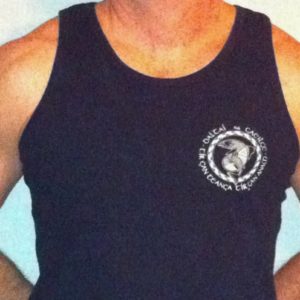Forum Replies Created
-
AuthorPosts
-
Wee_Falorie_Man
Participant“Leabhar Mór Bhriathra na Gaeilge” is by far the best, most comprehensive book for learners that I have ever seen. It gives the full conjugation of 112 verbs in all of the 3 main dialects and Standard. And it also shows you how to conjugate the thousands of other verbs that exist in the Irish language by referring you to similar verbs that are conjugated in the same way. It’s a GREAT book!
Wee_Falorie_Man
ParticipantAnd with “t”, especially when before or after an “i” or even just an “í” sound, has a hard “CH” like in the English word “chair”.
If you’re getting this from Rosetta Stone, I don’t think you’re hearing it right. I worked through all 3 levels last year and that’s not how the slender “t” is pronounced on Rosetta Stone.
Wee_Falorie_Man
ParticipantYou’re right Jeaicín.
A couple of years ago, the same person that I mentioned earlier, was teaching me how to say “I’ll be back” – Bead thar n-ais.He mentioned that they are now teaching everyone to say “beidh mé” instead of “bead” – But he said if somebody tells me I’m “wrong”, I should go ahead and hit them over the head 😆
Wee_Falorie_Man
Participant(or maybe old Munster Irish, I don’t know if people still say that now).
I know a person from Múscraí who says:
Do chuala – I heard
Do chonac – I saw
Duart (sp.?) – I said
etc.
But he is almost 87 years old, so he may not be representative of the typical Irish speaker from Munster.
Wee_Falorie_Man
ParticipantI was taught:
“Cad as duit?” or “Cad as thú?”
Is ó Alburquerque mé.
or
Is as Alburquerque mé.“Is as Alburquerque DOM” sounds right but I wasn’t taught to say it that way.
Wee_Falorie_Man
Participant“Gaeilge Chorca Dhuibhne” by Diarmuid Ó Sé
Here’s a link from Litríocht:
http://www.litriocht.com/shop/product_info.php?products_id=5556
Wee_Falorie_Man
ParticipantI’m pretty sure jaygon means “Réchúrsa Gramadaí” by Brian Mac Giolla Pádraig.
Just lettin’ ya know …
Wee_Falorie_Man
ParticipantCad ‘na thaobh go rabhais ann? – Why is it that you were there?
You’re right, it often makes sense to think of “go” as “that”.
Wee_Falorie_Man
ParticipantWell, after “An fada” you would definitely use “a” not “go” – For example:
An fada a bhís ag obair inné?
You also use “a” after a question word like “Cathain”:
Cathain a bhíonn tú ann?
hmm … I can’t think of another question that is followed by “go” except for “Cad ‘na thaobh”. I’m hoping that maybe Lughaidh can help out with this (hint, hint)
Wee_Falorie_Man
Participanter … “Cén fath” is not used in Munster Irish – it’s “Cad ina thaobh …?” (“Cad ‘na thaobh …?”)
I’ve never heard “Cá fhad …?” before – Does that mean “How long”?
I was taught “An fada …?” by a native speaker from Munster.
An fada a bhís i Sasana? – How long were you in England for?
Wee_Falorie_Man
ParticipantNíl an ceart agat, a chara.
The center of the South-West has got to be New Mexico, right? 😉
Wee_Falorie_Man
ParticipantNew Mexico (a Rocky Mountain state in the south-west) doesn’t really fit into any of the categories in the poll :down:
Wee_Falorie_Man
ParticipantI checked in my Teach Yourself Irish book (which teaches the Munster dialect) and they say that teangan is the genitive form of teanga.
“Cad ‘na thaobh go raibh sí ann?” is the way I was taught to say it but I’m sure there are different dialects that say it differently.
Wee_Falorie_Man
Participantteanga – nominative singular
teangacha – nominative plural
teangan – genitive singular
teangain – dative singular
Dineen
Wee_Falorie_Man
ParticipantIs deas liom bualadh leatsa 🙂
-
AuthorPosts
